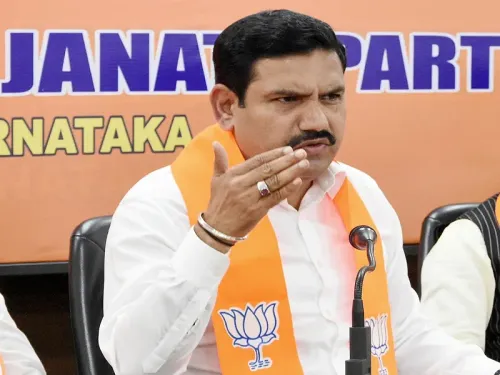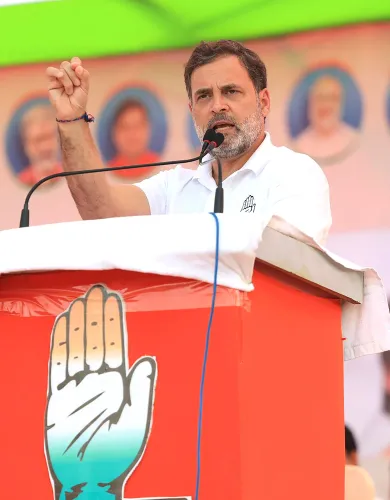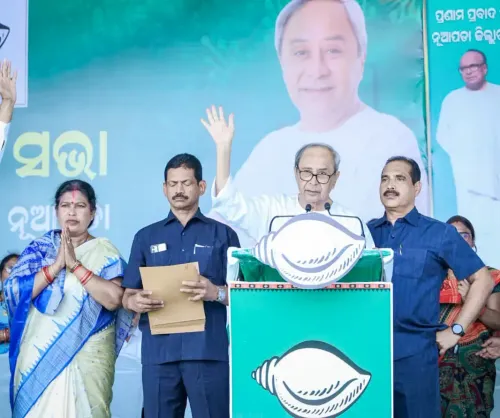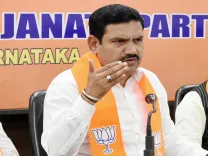How is ‘Vande Mataram’ Unifying India?

Synopsis
Key Takeaways
- Vande Mataram is a symbol of India's unity and pride.
- The song has played a significant role in India's freedom struggle.
- A commemorative plaque was unveiled during the 150th anniversary celebration.
- The Assembly was illuminated in the tricolour to mark the occasion.
- Citizens are encouraged to participate in the year-long commemoration.
New Delhi, Nov 7 (NationPress) The Speaker of the Delhi Assembly, Vijender Gupta, commended the unifying essence of ‘Vande Mataram’ during its 150th anniversary celebration, as reported by an official. “Vande Mataram is an everlasting anthem that connects every Indian with the spirit of our homeland,” Gupta remarked while addressing the audience at the Delhi Legislative Assembly.
The celebration included the unveiling of a commemorative plaque featuring the complete text of Vande Mataram and the Assembly building was illuminated in the tricolour, showcasing the unity and national pride of India.
Deputy Speaker Mohan Singh Bisht and MLAs Sanjay Goyal, Karnail Singh, Anil Goyal, and Chandan Kumar Choudhary also attended the event.
Gupta stated that the plaque will serve as a reminder of this timeless song and its significant role in India’s freedom struggle and national identity.
Reflecting on its origins, Gupta recounted how Bankim Chandra Chatterjee, a prominent civil servant and visionary writer, penned this eternal hymn on Ashwin Navami, November 7, 1875, inspired by the pain he suffered under colonial rule.
He highlighted that the song was later incorporated into Anandamath (1882), where the monks of the monastery represented the religion of patriotism.
The depiction of three idols of Bharat Mata — one divine, one in distress, and one destined to rise again — symbolizes India’s enduring journey from subjugation to revival, he elaborated.
Gupta pointed out that Vande Mataram became the anthem of India’s independence movement, first performed publicly by Rabindranath Tagore at the Congress session of 1896, resonating across the nation during the partition of Bengal in 1905.
He added that the song motivated numerous revolutionaries, from Bhagat Singh’s courtroom declaration of “Bharat Mata ki Jai” to Madam Bhikaji Cama’s unfurling of the tricolour in Berlin, adorned with the words Vande Mataram.
Gupta stressed that this anthem transcends politics, religion, and geography, “it belongs to 140 crore Indians, symbolizing our collective spirit, unity, and pride.”
On this significant day, Gupta announced that the Delhi Legislative Assembly has been illuminated in the tricolour, representing the celebration of India’s unity and strength.
He urged all citizens to engage in the year-long 150 Years of Vande Mataram Commemoration, emphasizing that everyone should share this moment as a pledge of unity and dedication to the nation.









